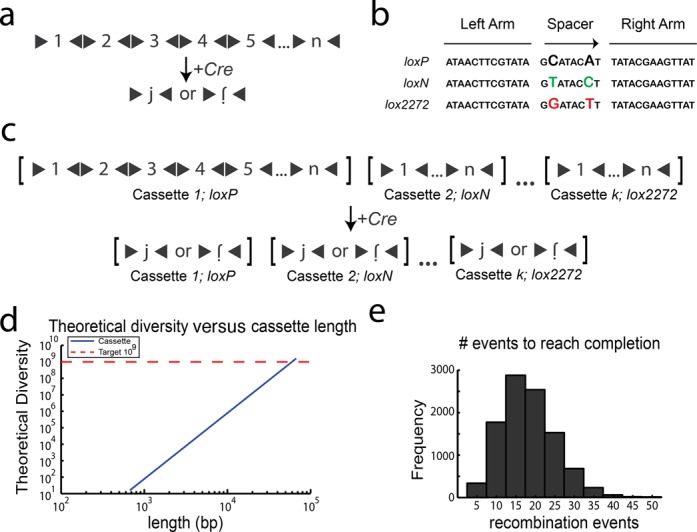Figure 1.

Design of Cre cassettes. (A) n sequence fragments, each flanked by loxP sites (black triangles) in opposing orientations are concatenated to form a cassette. Upon Cre recombination, the cassette is shuffled and pared down until a single fragment, j, remains in either orientation. (B) Several variant mutually incompatible lox sites have been described, each of which has a pair of mutations in the spacer sequence. (C) The diversity attainable by Cre recombination can be increased by concatenating k cassettes, where each cassette utilizes an incompatible lox site. Cre recombination results in the independent shuffling of each of the k cassettes. (D) The diversity as a function of length for cassettes containing n = 100 fragments (100bp each) concatenated together. Lengths >60kb are needed to reach the requisite diversity of 109. (E) The distribution of the number of recombination events needed for each cassette to reach completion.
